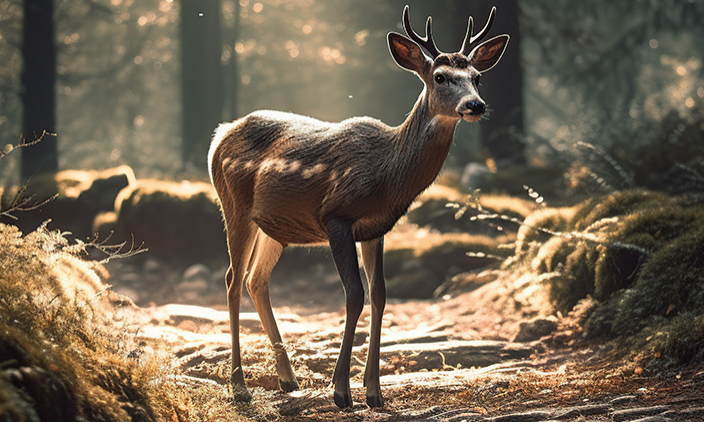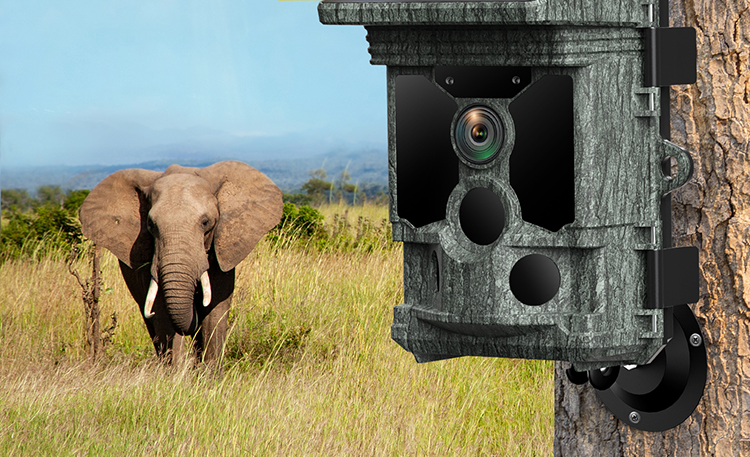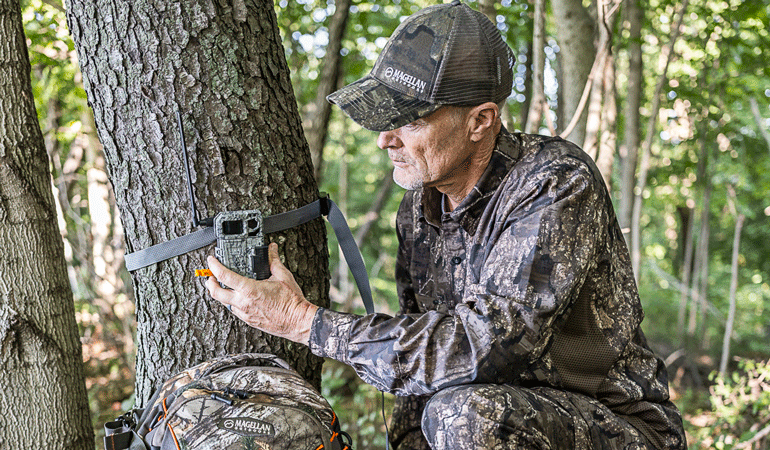What should hunters be aware of

Be familiar with the ecological habits of preys

Understanding the habitat, activity time, feeding habits and breeding period of preys can improve the hunting efficiency of preys. For example, when hunting deer, you should prepare really early in the morning or late afternoon when their action is active.
Use Proper Tools

Hunting requires the use of different types of weapons and tools such as bows, guns, slingshots, baits, trail camera, etc. When choosing weapons and trail cameras, choose based on the type and size of your preys.
Cover yourself

While hunting, hunter must ensure that he or she remains undetected. Skillfully use his body language and behavior to blend into the natural environment, and choose appropriate clothing for camouflage. At the same time, always be careful to avoid making too much noise.
Technical proficiency
Hunting requires certain technical knowledge and skills, such as precise aiming and control of biological functions are very important. What’s more, hunting involves long periods of waiting and observation, and hunters need to have a high level of patience.
Safety awareness

Hunting is an activity involving the use of weapons, the natural environment and wild animals, and requires hunters to have a strong sense of safety. While hunting, you must abide by local regulations and laws, as well as safety rules to ensure the safety of yourself and others' lives and property.
For hunters, we are going to talk about your preys, and to make you know more about your preys, so here are several Common preys in hunting.
Red deer

It is a large animal in the order of ungulates and artiodactyls. Male deer have huge antlers, which begin to grow in spring and fall off every winter. Their fur will have different colors depending on the season and habitat type. The fur color is generally gray or other lighter colors in winter, while the color is redder and darker in summer. During the estrus period, male deer will perform various actions to fight for the right mate, including posturing, antlers wrestling and hooting. The male deer will make a continuous high-pitched call to ensure the male deer's dominance and attract the female deer. The call of the Canadian red deer is also one of the most distinctive calls in nature. Each foot has an even number of toes.
Elk

Its head is as narrow and long as a horse's, and its antlers are uniquely shaped, opposite those of other species. The front forks are divided into smaller forks, while the rear forks are almost not forked. The head is large, the muzzle is narrow and long, the exposed part of the nose is wide, the eyes are small, and the suborbital gland is very prominent. The limbs are thick, the main hooves are wide and fleshy, and the hanging hooves are well developed, making a loud knocking sound when walking. Elk prefer swampy wetland habitats, feeding on grasses and aquatic plants. They like to live in groups, are good at swimming, and like to eat tender grass and aquatic plants. Summer mating estrus occurs one season earlier than in most other similar species.
Sika deer

Sika deer are active in the morning and dusk, and their living areas change with the seasons. In spring, they are mostly on semi-shady slopes. Moves to forest edge areas on shady slopes in summer and autumn. In winter, they like to eat ripe fruits on warm sunny slopes. During the daytime, they mostly choose to inhabit sunny slopes, where the thatch is deep and similar in color. At night, they inhabit the middle or upper middle of the slope. The slope direction is variable, but they are still more common on sunny slopes, where the thatch is relatively low. Short and rare.
They has an alert temperament, quick movements, well-developed senses of hearing and smell, slightly weak vision, and is timid and easily frightened. Because of its long and slender limbs and narrow and pointed hooves, it can run quickly and have strong jumping ability. It is especially good at climbing steep slopes. Its continuous long-span jumps are brisk and agile. Sika deer are not very gregarious, and adult males often live alone. They migrate short distances in summer and winter and have a certain sense of territory, especially during the breeding season. When disputes arise, antlers and hooves are often used as the main weapons.
Reindeer

The most amazing behavior of reindeer is their annual migration of hundreds of kilometers. As soon as spring arrives, they leave the forests and grasslands in the subarctic regions where they overwinter and head north along a route that has remained unchanged for hundreds of years. And it is always led by the female deer, followed closely by the male deer, in an orderly manner, driving straight in, eating while walking, day and night, taking off the thick winter clothes along the way, and giving birth to new thin summer clothes, and the shed down falls on the ground, it happened to become a road sign. It goes like this year after year, and I don’t know how many centuries have passed. Reindeer always move forward at a constant speed. Only when they are disturbed by wolves or chased by hunters, they will run fiercely, making an earth-shattering noise, raising dust all over the sky, breaking the tranquility of the grassland, and making a soundless journey in the Arctic. A fight for life begins on the ground.

The growth rate of young reindeer is unparalleled by any animal. The mother deer is conceived in winter and gives birth during the migration in spring. The cubs can follow the mother deer two or three days after they are born. After a week, they can run as fast as their parents, reaching speeds of up to 48 kilometers per hour.
Conclusion

There are many factors that hunters should pay attention to when hunting, especially the understanding of the living habits of the prey. The prey's activity time and foraging time are regular and may be different from the normal work and rest time of humans, so When hunting, hunters need to adjust their work and rest time according to the target and prepare in advance to catch prey.

Auxiliary equipment such as trail cameras can play a very good supporting role when hunting. In addition to understanding the habits of animals, it is also important to have a good trail camera. It can record every move of the prey in real time, which is more accurate and accurate than understanding the habits. Science is a must-have good partner for hunting.




Leave a comment
This site is protected by hCaptcha and the hCaptcha Privacy Policy and Terms of Service apply.